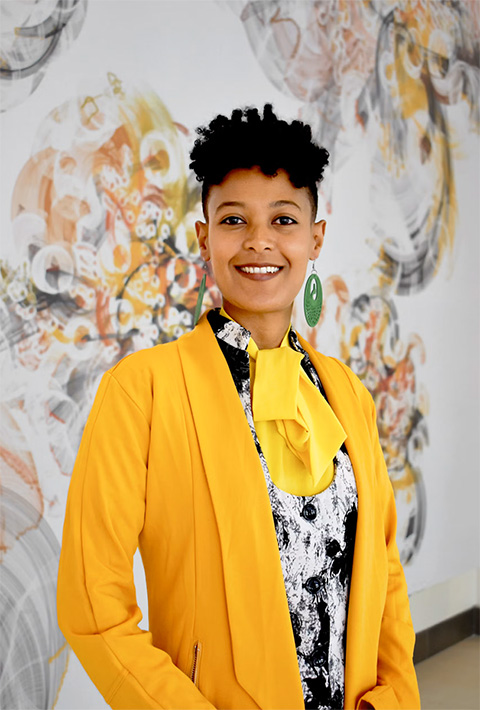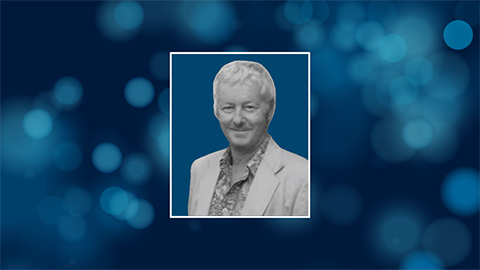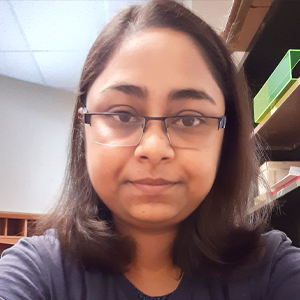Learning, leading and lifting others
As a child in Ethiopia, Tigist Tamir dreamed of becoming an astronaut. But when she moved to the U.S. as a teenager, her path took a new trajectory — one that grounded her in scientific research.

“I was curious to understand what scientists do and what steps I needed to take to join their ranks,” Tamir said.
High school and college lab classes lit a spark that would define Tamir’s career. As an undergraduate at the College of William and Mary, she found her footing in the biological sciences, working in Matthew Wawersik’s lab to study signaling pathways in fruit flies. There, she discovered genetics and microscopy.
Wawersik encouraged her to apply to a Howard Hughes Medical Institute summer program, and her acceptance sent Tamir to Washington. In Randall Moon’s lab, she explored cancer biology and marveled at the survival strategies of cancer cells, a stark contrast to her developmental biology background.
Searching for her next steps, Tamir enrolled in a National Institutes of Health–sponsored postbaccalaureate research program at the University of South Carolina. During her first semester working with Michael Wyatt, she realized her passion lay at the lab bench. So, she set her sights on earning a Ph.D. in Ben Major’s lab, where she studied the effects of oxidative stress on cancer cell signaling pathways. There, she gained more than technical skills — she learned how to connect basic research to real-world disease mechanisms.
In 2020, she began postdoctoral work in Forest White’s lab at the Massachusetts Institute of Technology. Combining structural biology with modeling, she began investigating how phosphorylation regulates metabolic enzymes in diseases such as cancer and obesity.
“I wanted to understand what these phosphorylation sites are doing, how they regulate metabolism, and their roles in disease,” she explained.
Tamir sees this research as the launchpad for her own lab. “The next phase of this work will involve large-scale multiomics studies and implementing machine learning,” she said.
Tamir is a former American Society for Biochemistry and Molecular Biology’s Maximizing Opportunities for Scientific and Academic Independent Careers, or MOSAIC, scholar. For Tamir, the program has been invaluable.
“MOSAIC has the right support system and the right community where I could go, especially with things which may be hard to resolve in the professional world,” Tamir said. “If I have any professional concern, unique to me, how I am experiencing them, I could always reach out to the network and see if anybody has a good solution.”
She said she feels fortunate to be a part of the community geared towards mutual growth.
Tamir recently opened her own lab at the University of North Carolina at Chapel Hill in the department of biochemistry and biophysics in early 2025. Her lab employs a multidisciplinary approach using biochemistry, multiomics and computational models to investigate the intricate regulation of oxidative stress response within complex signaling and metabolic networks. One of her major goals: finding better therapeutic options for triple-negative breast cancer, an aggressive form of the disease that disproportionately affects women of color and tends to resist chemotherapy.
Enjoy reading ASBMB Today?
Become a member to receive the print edition four times a year and the digital edition monthly.
Learn moreGet the latest from ASBMB Today
Enter your email address, and we’ll send you a weekly email with recent articles, interviews and more.
Latest in People
People highlights or most popular articles

Mydy named Purdue assistant professor
Her lab will focus on protein structure and function, enzyme mechanisms and plant natural product biosynthesis, working to characterize and engineer plant natural products for therapeutic and agricultural applications.

In memoriam: Michael J. Chamberlin
He discovered RNA polymerase and was an ASBMB member for nearly 60 years.

Building the blueprint to block HIV
Wesley Sundquist will present his work on the HIV capsid and revolutionary drug, Lenacapavir, at the ASBMB Annual Meeting, March 7–10, in Maryland.

In memoriam: Alan G. Goodridge
He made pioneering discoveries on lipid metabolism and was an ASBMB member since 1971.

Alrubaye wins research and teaching awards
He was honored at the NACTA 2025 conference for the Educator Award and at the U of A State and National Awards reception for the Faculty Gold Medal.

Designing life’s building blocks with AI
Tanja Kortemme, a professor at the University of California, San Francisco, will discuss her research using computational biology to engineer proteins at the 2026 ASBMB Annual Meeting.

